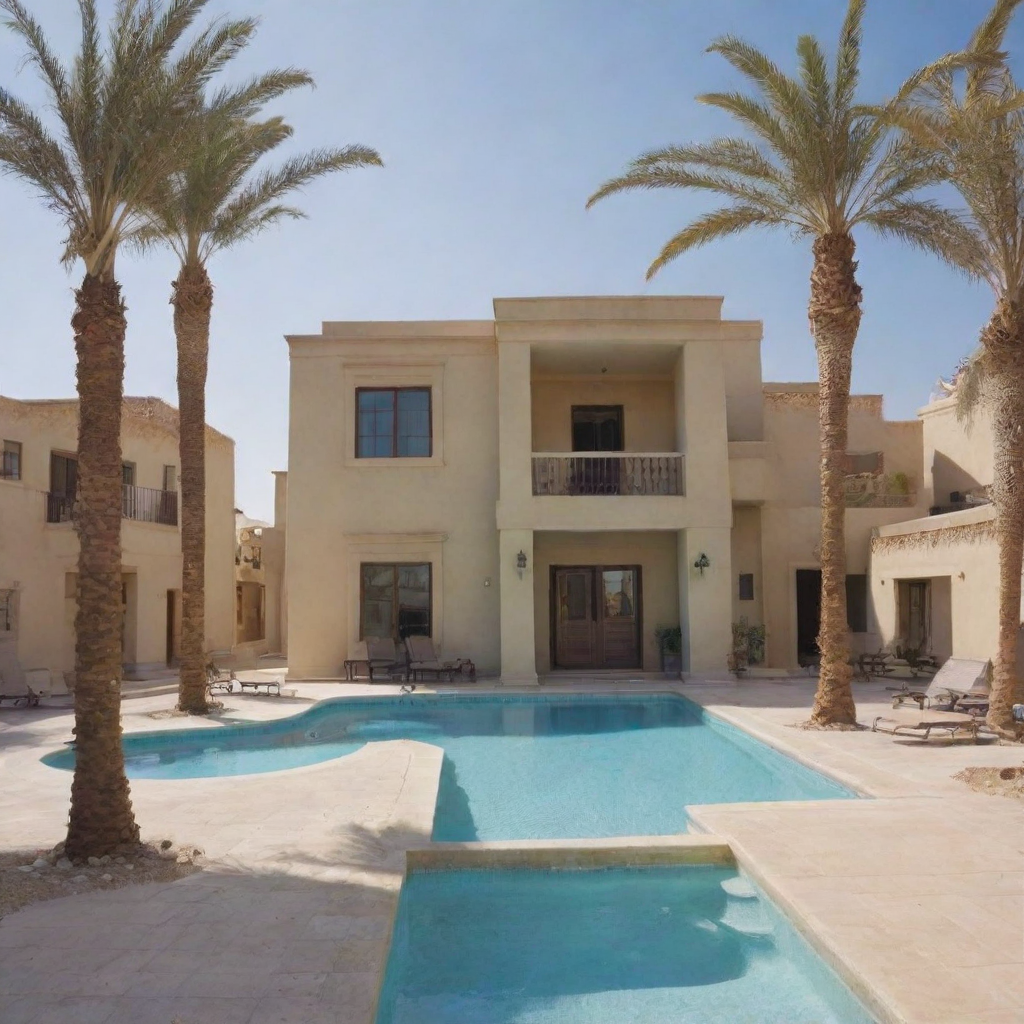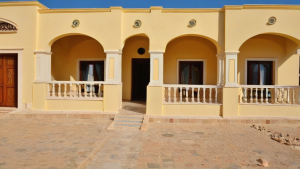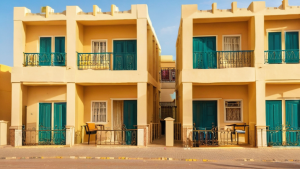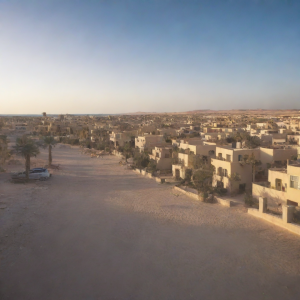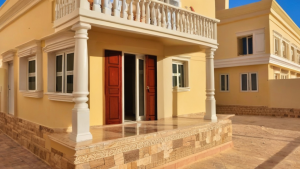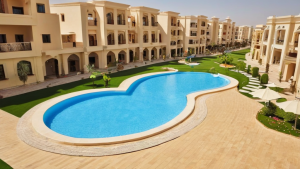Summary about owning and buying property in Hurghada, Egypt.
- Websites such as OLX Egypt, Property Finder Egypt, and Aqarmap list a vast range of rental properties and allow filtering by price, size, and yield estimates.
- The gross yield is calculated by dividing the annual rental income by the property price, then multiplying by 100 to get a percentage.
- When sourcing apartments in Egypt, physically inspect the apartment or hire a local expert to evaluate building quality, plumbing, electrical systems, and overall maintenance.
- Investing in areas slated for future development can significantly increase the value and rental demand of your property.
- In Egypt, it’s common for landlords to request a security deposit and references.
Effective techniques for sourcing high-yield apartments for buy-to-let strategies in Egypt
Identifying high-yield neighborhoods in Egypt
To successfully find high-yield apartments for buy-to-let investments in Egypt, prioritize locations with strong rental demand and steady economic growth. Cities like Cairo, Alexandria, and emerging urban areas offer promising opportunities due to increasing population and urbanization. Focus on neighborhoods where rental prices are rising but property prices remain affordable, enabling a higher rental yield.
Key areas to explore include:
- New Cairo: Known for its modern infrastructure and proximity to business districts, attracting young professionals and expatriates.
- 6th of October City: Offers affordable housing options and a growing demand from students and workers.
- Maadi and Zamalek: Popular with expatriates and upper-middle class tenants, commanding premium rents.
Researching local demographics and employment centers will help you zero in on locations where tenants are actively seeking rental properties.
Using digital platforms and local networks
Leveraging digital real estate platforms can save time and widen your search for high-yield apartments. Websites such as OLX Egypt, Property Finder Egypt, and Aqarmap list a vast range of rental properties and allow filtering by price, size, and yield estimates.
Along with online tools, tap into local real estate agents and property managers who understand the nuances of neighborhood demand and can provide exclusive listings not easily found online. Building relationships with these professionals offers insights into upcoming projects and distressed properties that may be bought below market value.
Evaluating property financials for buy-to-let
Before purchasing, it’s vital to assess the projected rental income against the total investment cost. The gross yield is calculated by dividing the annual rental income by the property price, then multiplying by 100 to get a percentage. Aim for properties with yields above 7%, which is considered attractive in Egypt’s market.
Don’t overlook other financial elements such as:
- Maintenance fees and management costs: Some apartment complexes in Egypt charge monthly service fees that can impact net returns.
- Vacancy rates: Consider how often the apartment might remain unoccupied and factor that risk into your calculations.
- Financing costs: If using a mortgage, include interest payments to determine actual profitability.
Smooth cash flow is essential for sustaining your buy-to-let business over time.
Inspecting and validating property conditions
High yields can sometimes mask underlying issues with the property condition which may lead to costly repairs. When sourcing apartments in Egypt, physically inspect the apartment or hire a local expert to evaluate building quality, plumbing, electrical systems, and overall maintenance.
A well-maintained apartment reduces tenant turnover and promotes steady rental income. Additionally, verify legal approvals, titles, and ensure the property adheres to local regulations to avoid future disputes.
Considering future development and infrastructure projects
Investing in areas slated for future development can significantly increase the value and rental demand of your property. Government infrastructure projects such as new metro lines, road expansions, or commercial hubs in cities like Cairo or Alexandria usually boost property attractiveness.
Keep informed about urban planning and municipal announcements by following official websites and local news sources. This foresight allows you to buy apartments before prices spike, maximizing your yield when the development completes.
Negotiating price and terms for better returns
When you find a promising apartment, don’t hesitate to negotiate the purchase price and contract terms. Many sellers in Egypt are open to negotiation, especially if you demonstrate serious intent and cash availability.
Key negotiation points include:
- Price reductions to improve yield
- Flexible payment terms aligned with your financing
- Inclusion of fixtures or furniture to attract tenants quickly
Strong negotiation skills directly impact your investment’s profitability and long-term success.
Building a reliable tenant screening process
Securing reliable tenants is critical to sustaining high rental yields. Implement a thorough screening process focusing on employment stability, creditworthiness, and rental history to minimize tenant risks.
In Egypt, it’s common for landlords to request a security deposit and references. You may also consider collaborating with local property management companies to handle tenant communication and rent collection efficiently.
Leveraging tax benefits and legal frameworks
Understanding Egypt’s property tax laws and buy-to-let regulations helps optimize your net returns. Certain incentives and legal protections exist for landlords, such as deductions on rental income or simplified eviction processes.
Consulting with a local legal advisor ensures you align your investment with Egyptian regulations and avoid costly penalties.
By combining location analysis, digital tools, financial evaluation, and proactive management, you can effectively source high-yield apartments perfect for buy-to-let strategies in Egypt. This approach maximizes rental income potential while minimizing risks associated with property investment.
Key factors influencing rental yields in Egypt’s apartment market
Investing in apartments for buy-to-let in Egypt presents an opportunity to capitalize on a growing market, yet achieving high rental yields requires a thorough understanding of several influencing elements. Rental yield, a critical measure for investors, represents the annual rental income relative to the property’s value. In Egypt’s diverse real estate market, multiple factors shape how lucrative such investments can be.
Location and neighborhood dynamics
Location remains a prime driver of rental yield performance in Egypt’s apartment market. Urban centers like Cairo and Alexandria typically offer higher demand due to economic activities, employment opportunities, and infrastructure. However, within these cities, neighborhoods differ significantly in rental potential. Proximity to business hubs, educational institutions, healthcare facilities, and transportation nodes enhances the attractiveness of a property.
For example, apartments near Cairo’s New Administrative Capital or New Cairo tend to command better rental prices owing to modern infrastructure and a rising expatriate and professional population. Conversely, older districts might offer lower purchase prices, but also often yield lower rents, affecting overall yield.
Property type and building quality
The kind of apartment being sourced strongly impacts rental yields. Modern units with appealing designs, efficient layouts, and quality finishes generally attract tenants willing to pay premium rents. Building amenities such as security, parking, gym facilities, and power backup further enhance desirability.
Older or poorly maintained buildings can pose challenges, from frequent maintenance costs to difficulty in attracting tenants. When sourcing high-yield apartments, prioritizing properties that offer good durability and minimal renovation needs often translates into stable rental income streams.
Target tenant profile
Understanding the tenant market is vital. Egypt has a diverse rental base including students, young professionals, expatriates, and families. Each group has different expectations and budgets. For instance, apartments near universities may favor student renters demanding affordable, smaller units, while apartments in business districts attract professionals seeking spacious, fully furnished apartments.
Catering your property selection to the right tenant type allows you to maximize occupancy rates and optimize rent levels, directly influencing rental yield.
Economic factors and market trends
Egypt’s macroeconomic environment affects rental yields significantly. Inflation rates, currency stability, government policies on real estate, and interest rates all influence tenants’ ability to pay and property values. For example, periods of economic growth often lead to increased demand for rental units and rising rents.
Investors should monitor real estate market cycles closely. During downturns, rental demand may soften, negatively impacting yields. Conversely, emerging submarkets or new urban development projects can create hotspots for high rental growth and stronger yields.
Legal framework and rent controls
The legal setting in Egypt related to tenancy and property rights plays a crucial role. Restrictions on rent increases or tenant eviction policies can limit an investor’s flexibility in adjusting rental prices according to market conditions. Understanding these regulations helps investors forecast net rental returns more accurately and avoid unexpected income limitations.
Supply and demand balance
Rental yields are sensitive to the balance between rental property supply and tenant demand. In districts saturated with new developments, rental prices may stagnate or drop due to oversupply. Conversely, neighborhoods undergoing regeneration or with limited rental options may see rental rates increase sharply.
Examining upcoming construction projects, vacancy rates, and trends in tenant migration within cities can help investors identify locations with potential for superior yields.
Effective property management
While not a direct factor of the apartment itself, the quality of property management can impact net rental yields. Efficient management ensures timely rent collection, minimal vacancy, prompt maintenance, and tenant satisfaction. These elements help sustain steady income and protect the asset’s long-term value.
Key takeaways for investors
- Prioritize apartments in strategically located neighborhoods with good access to services and transport.
- Focus on modern, well-maintained properties with amenities that appeal to your target tenant demographic.
- Understand the tenant segments prevalent in each area to match property selection with demand.
- Keep abreast of Egypt’s economic shifts and real estate market trends to time investments effectively.
- Comply with local rental laws and regulations to ensure rental income stability.
- Assess supply and demand dynamics to avoid high vacancy risks.
- Invest in competent property management to maximize rental collection and reduce tenant turnover.
By carefully evaluating these factors, you can source high-yield apartments that offer resilient rental returns and capitalize on Egypt’s growing buy-to-let market. In such a vibrant and evolving real estate environment, detailed research and a tenant-focused approach are essential for success.
Sourcing high-yield apartments for buy-to-let strategies in Egypt requires a focused approach that blends smart research with an understanding of local market dynamics. By applying effective techniques,such as tapping into emerging neighborhoods, working closely with reliable local agents, and leveraging online property platforms,you enhance your chances of finding apartments that offer attractive rental returns. It’s not just about locating any property; it’s about identifying those hidden gems that combine affordability with strong rental demand.
Understanding the key factors influencing rental yields is equally crucial. Locations with robust infrastructure, proximity to transport links, and nearby amenities tend to draw consistent tenants, boosting rental income. Additionally, areas experiencing economic growth, urban development, or an influx of young professionals often promise higher yields. By factoring in these elements when selecting apartments, you position your investment to generate stable, long-term returns.
Egypt’s property market continues to offer promising opportunities for buy-to-let investors who adopt a strategic sourcing mindset. Being aware of regional trends, tenant preferences, and the fluctuating rental market will help you make informed decisions that maximize yield while minimizing risk. Ultimately, your success hinges on combining hands-on sourcing tactics with a thorough grasp of the market’s economic and social drivers. This balanced approach empowers you to build a profitable property portfolio in Egypt’s vibrant buy-to-let sector.

